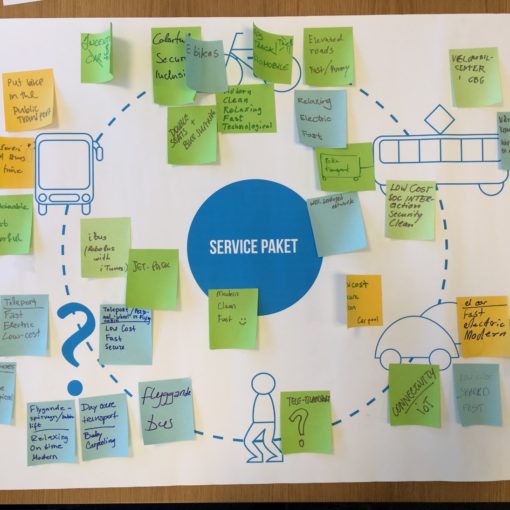Adnan Barkin Dalmaz, Johannes Benjamin Moshe Hilke (2017)
As the world is experiencing a fast-paced urbanisation, the demand for urban mobility is increasing. This raises the question of how to organise a functioning transportation system. The elements of such a system include a combination of public transportation services, active mobility solutions such as walking and cycling, and personal vehicles. To assess the performance of a transport system, ecological, economical, societal, and well-being criteria can be applied. The purpose of this thesis is to provide guidelines for scaling up the modal share of cycling in Gothenburg area. To pursue this goal, the impacts of cycling regarding the aforementioned criteria are investigated and a framework to increase its modal share is provided. This is supported by the following research questions: • In which cases does cycling pose an advantage for the users over other modes of transportation? • What are the potential barriers and drivers for scaling up cycling? – Where are they located in the multilevel design model and how do they influence each other? • Which initiatives need to be taken in order to support the intention of upscaling cycling? Under the methodological umbrella of backcasting and the multilevel design model, the following research activities are executed; literature review on urban transportation, quantitative analysis of travel statistics, interviews with end users who cycle as their main mode of transportation (or are considering it), and lastly a co-creative solution development with mobility professionals. The results of the research activities include the criteria for future urban mobility, impacts of cycling on the aforementioned criteria, the extents of potential target groups; barriers and drivers for a transition towards cycling as part of active mobility; as well as a plan providing concrete actions to be performed in order to ensure this process. The results are designed to assist the implementation of the Gothenburg cycling strategy for 2025. In conclusion, three different areas need to be looked into to increase the number of cyclists and the modal share of cycling: Firstly, focusing on communicating the advantages of cycling, in particular the positive impacts on the physical and mental well-being. Secondly, lowering the entry threshold for noncyclists in order to enable them to experience the positive effects and support a shift from other modes of transportation towards cycling. Last but not least, making sure that cycling remains convenient for those who are using this mode of transportation by providing suitable infrastructure.
Read the full report here.





